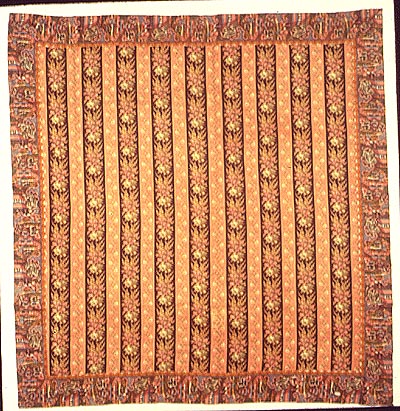Quilt No.959NGA - National Gallery of Australia

"Mrs. Marjorie Campbell (c1895-1967) of Victoria bequeathed this quilt to a member of her family. Marjorie may have been a descendant of one of the artists. In 1998 the Canberra Quilters Inc., purchased it from a close relative of Marjorie Campbell. In the same year, the Canberra Quilters Inc., donated the quilt to the National Gallery of Australia in memory of Jim Logan, the former Curator of Australian Decorative Arts." [NGA]
"There is little information about the fabrication of this quilt. It is remarkable for its use of fabrics that are contemporary to the Rajah quilt and the wonderful use of a rather wild chinoiserie lining reflects the fashion of the times. The stitching indicates two makers of differing skill, which implies that the fabric may have been brought out from England and cut out by one generation, then sewn and finished by the next." [NGA]
Related Quilts:
1461mm x 687mm
2645 x 2615mm
1800 x 1800mm
Backing or filling unknown.
No quilting.
2312 x 1905mm
2235 x 1778mm






